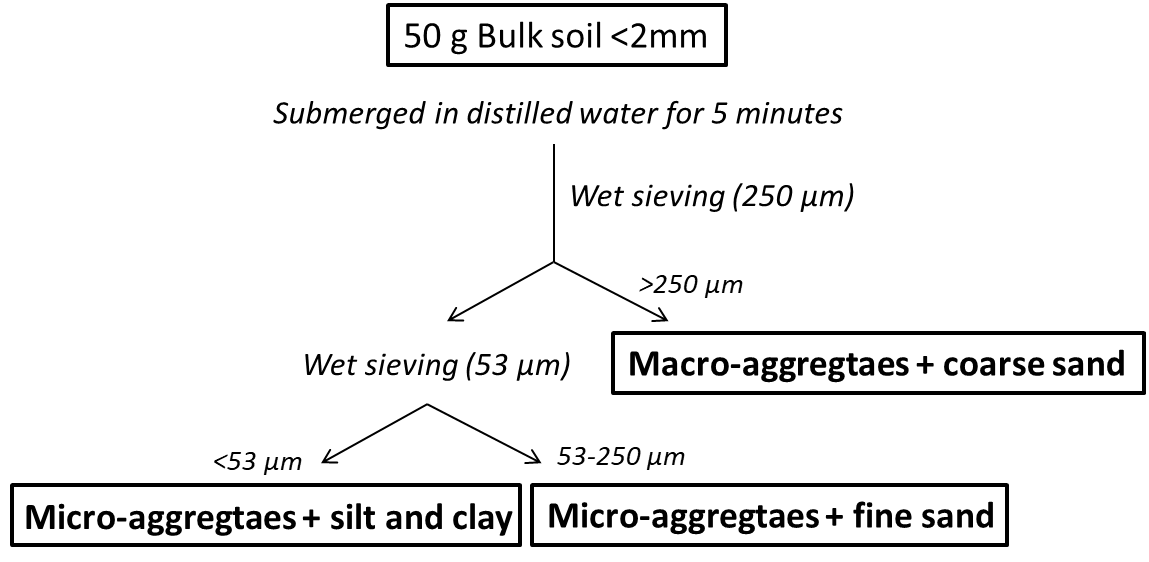Aggregates Six

Description and working steps
This method varies only slightly from Agg1, i.e. in amount of subample and slaking time. 50 g of subsample was submerged for 5 minutes on a 250 µm sieve. The Aggregates were separated by washing the soil on the sieve with an aerosol until the water was clear. Note that the use of an aerosol could increase the breaking of microaggregates. The >250 µm fraction was collected and wet sieving was repeated for the next smaller sieve (53 µm). All aggregate fractions were oven-dried at 50°C and weighted.
Initial Aim
We were confronted with a difficulty of distinguishing the SOC content between long term trial with different organic amendments. Using the total SOC content there were no significant differences, but using Sylvain's fractionation the variability between the replicates decreased (for the stable fraction) and we could demonstrate the effect of the treatments. Since then, we slightly modified the scheme in order to provide a rapid assessment of the stable fraction. At the moment we are applying this method across the Walloon region to investigate the effects of conservation techniques vs traditional agriculture and estimate the sequestration potential based on the C saturation as proposed by Hassink.
Advantages
The method is simple and fast. It takes less than one working hour for one sample.
Disadvantages
On the other hand, for the same reason, the largest aggregate size class can hold high amounts of the smaller fractions.
Reference
Six, J., Elliott, E., Paustian, K., 1999. Aggregate and soil organic matter dynamics under conventional and no-tillage systems. Soil Science Society of America Journal 63, 1350-1358. (adapted from)